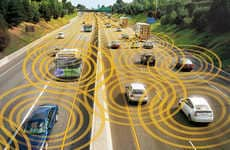



Instead of relying on drivers, V2V technology leads the way for safety
Implications - As autonomous vehicles become a reality, the integration of vehicle-to-vehicle technology as a means of creating safer transportation is on the rise. The OEM integration of the technology decreases human error by allowing other vehicles to adapt rather than having to rely on driver reaction. This signifies a preference for drivers to maintain control while adopting the perks of autonomous technology.
Trend Themes
1. Vehicle-to-vehicle Technology - Car industry is embracing the implementation of this technology to create safer transportation without relying on drivers.
2. Autonomous Driving Technology - The integration of autonomous driving tech contributes to decreasing human error and enhancing commuting experiences.
3. Smart Car Concepts - The application of context-aware technology and improved vehicular designs that aim to enhance both safety and holistic driving experiences.
Industry Implications
1. Automotive Industry - Vehicle manufacturers and dealerships alike can adopt these technologies and offer customers safer, smarter, and more holistic driving experiences.
2. Tech Industry - Companies that specialize in software and hardware development for vehicles can lead the way for the widespread integration of these innovations across different car makes and models.
3. Insurance Industry - Insurance providers can leverage V2V and autonomous driving tech to adopt smarter, data-driven insurance policies and to offer lower premiums to customers with cars equipped with advanced safety systems.




































